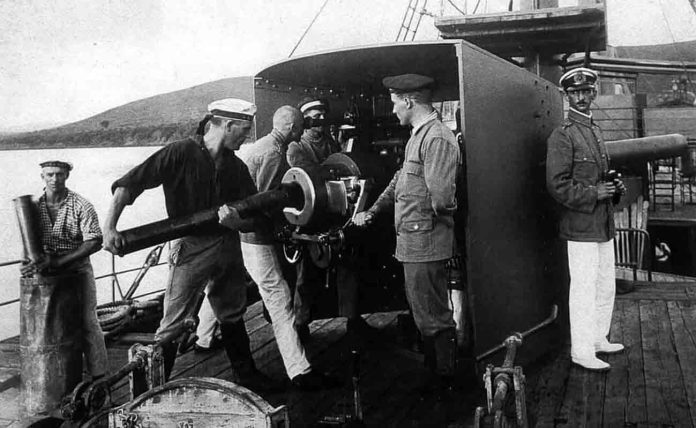Battle for Lake Tanganyika – Background and the Aftermath
During World War I, the Scramble for Lake Tanganyika which was later known as Battle for Lake Tanganyika involved several naval battles fought by parts of the Royal Navy, Kaiserliche Marine, and the Force Publique between December 1915 and July 1916. Lieutenant-Commander Geoffrey Spicer-Simson was in charge of the British troops, which consisted of two motorboats named HMS Toutou and Mimi. The boats were brought to South Africa and then hauled through the African forest via railway and river to the lake. The goal was to reclaim control of the tactically vital Lake Tanganyika, which German units had dominated since the war began.
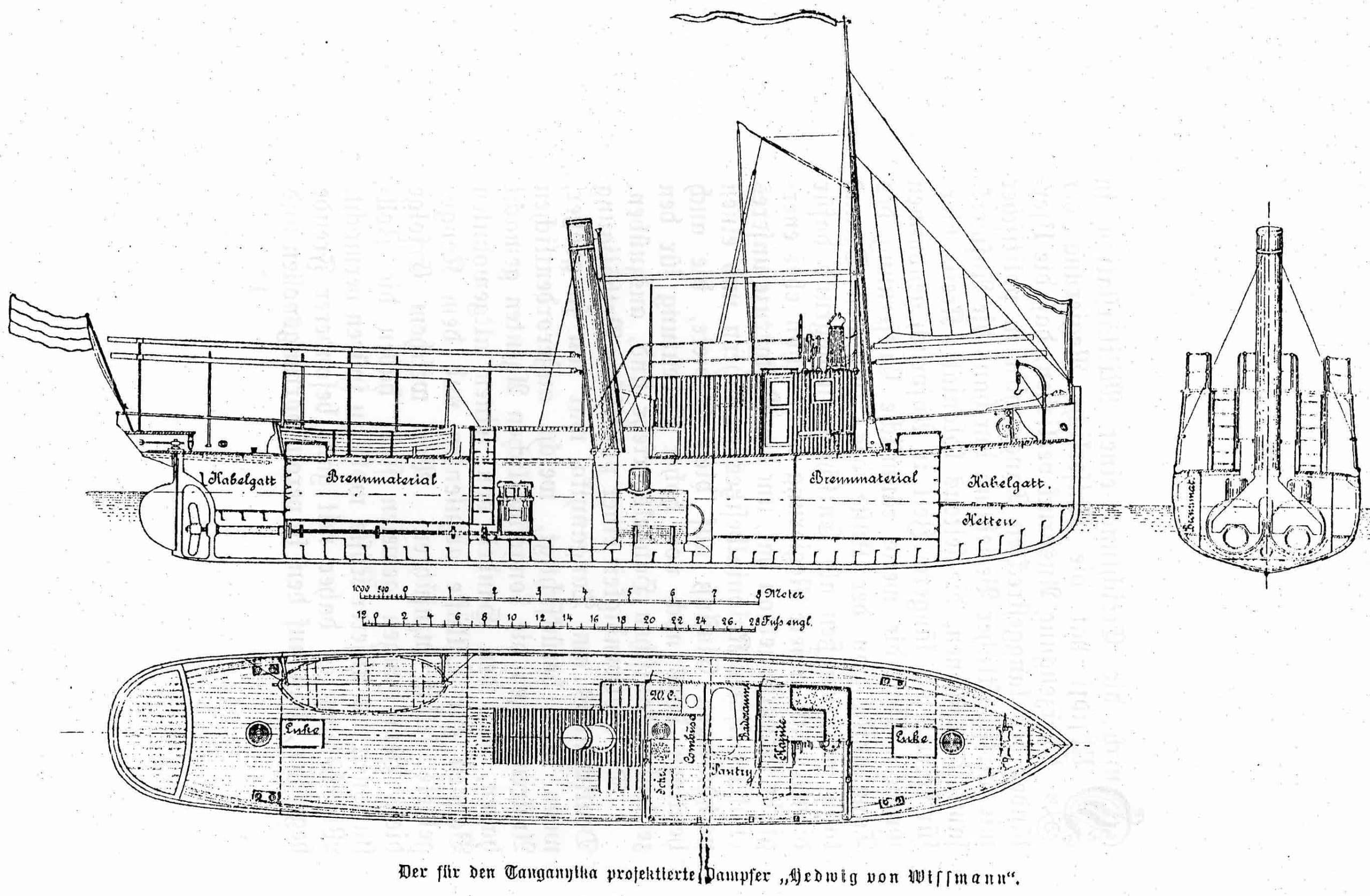
During the Battle for Lake Tanganyika, the tiny motorboats launched an attack against two German opponents and defeated them in two short encounters. Kingani was captured and damaged in the first combat on December 26, 1915, and became HMS Fifi. The little fleet overpowered and sank Hedwig von Wissmann in the second. Graf von Götzen, a third huge and highly armed German boat stationed on the lake, was indecisively attacked by Belgian aircraft and scuttled. The Germans withdrew from the lake as the land-based combat progressed, and control of the lake’s surface went to the Belgians and the British.
Background of the Battle for Lake Tanganyika
Strategic Situation
Lake Tanganyika is located between the Belgian Congo to the west and German East Africa to the east. At the outset of the Battle for Lake Tanganyika, the Germans possessed two warships on Lake Tanganyika: the 60-tonne Hedwig von Wissmann (66 short tons; 59 long tons) and the 45-tonne Kingani (50 short tons;44 long tons). Hedwig von Wissmann was swiftly outfitted with four pom-pom cannons stolen from the wrecked survey ship Möwe and went out to the Belgian side of the lake’s port of Lukuga. On August 22, she attacked and sank the Belgian steamer Alexandre Del Commune after two more raids.
The Germans now had undisputed dominance on the lake, which was bolstered by losing the British African Lakes Corporation’s steamship Cecil Rhodes during a November 1914 raid. The Germans, headed by Major-General Kurt Wahle, exploited their control of the lake to mount an offensive on northern Rhodesia. This was resisted, but continued incursions on Belgian territory and Lukuga bombardments persuaded the Belgians to collaborate with the British for support in winning the Battle for Lake Tanganyika.
To help the Belgians win the Battle for Lake Tanganyika, the British sent two 12-pounder guns. Still, the Belgians were instead employing them as shore armory to protect Lukuga because they had little chance of being able to launch her. Despite this effort, the British and the Belgians were powerless to confront the Germans. The Belgians had the parts for Baron Dhanis, a massive steamer, which, if completed, would be far larger than either Hedwig von Wissmann or Kingani. Still, they were afraid of her being destroyed before she was launched since the Germans monitored the lake.
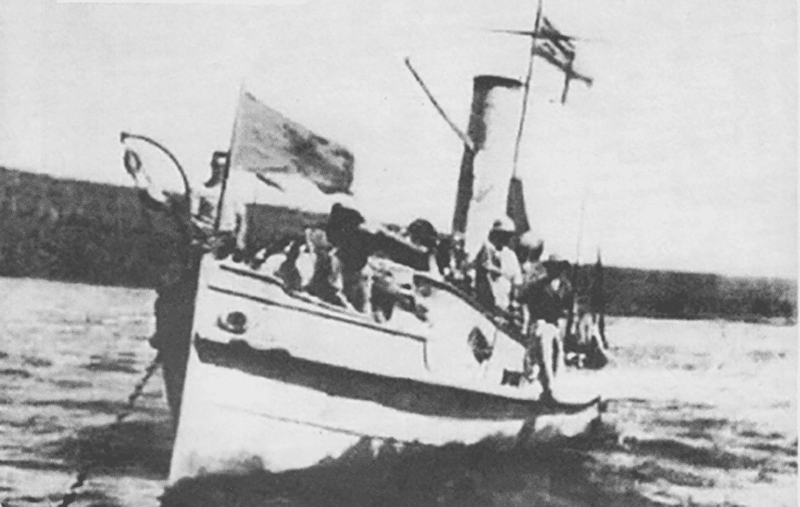
The capture of the lake by the Germans was crucial for the entire Central African War and the Battle for Lake Tanganyika. Whereas the British could assemble soldiers south of the lake and the Belgians to the north, none of them could advance into German East Africa as the Germans could use their steamers to move troops across the lake and sever their communication and supply links.
Lee’s Strategy During the Battle for Lake Tanganyika
On April 21, 1915, John R. Lee, a large game hunter, and Second Boer War veteran, came to the Admiralty to see Admiral Sir Henry Jackson. Lee had traveled to Eastern Africa and seen the German ships on the lake firsthand. He also informed them of the Germans’ plan to deploy a new ship from Kigoma, their guarded port. Graf von Götzen was built at the Meyer shipyard in Papenburg, dismantled, and sent to Dar es Salaam in 5,000 crates. She had been transported to Kigoma by train and assembled in secrecy. She would solidify German dominance with a length of 220 feet (67 meters) and a displacement of 1,575 long tons (1,600 tons). Also, it will allow up to 800–900 troops to be quickly moved to any location along the lakeside to raid enemy land and fight battles like the Battle for Lake Tanganyika.
Lee advocated sending motor gunboats to Africa and transporting them to the lake via the interior to address this threat. They would be compact and maneuverable and armed with a 7,000-yard (6,400-meter) range gun that could outgun and outrun the bigger German ships when the battle for Lake Tanganyika began. The use of tiny vessels that could be carried whole meant that they could be introduced onto the lake right away, avoiding the chance of being discovered and destroyed while being constructed. After considering the strategy, Sir Henry said, “It is both the tradition and duty of the Royal Navy to confront the enemy whenever water is available to float a ship.” Admiral David Gamble, Jackson’s junior, was tasked with finalizing the operation’s specifics. Gamble put Spicer-Simson in charge, making Lee second in command of the mission.
Giles Foden described Spicer-Simson as “a man court-martialed for sinking his ships, a habitual liar, and a skirt-wearer.” He had risen to the level of lieutenant commander. However, his progress was halted due to missteps and misfortunes. But that did not stop him from participating in the battle for Lake Tanganyika. He was transferred to a small office at the Admiralty to assist with transferring commercial sailors into the navy. He almost sank a submarine in 1905 when he came up with the concept of extending a cable in between two destroyers to look for periscopes. While testing Portsmouth Harbour’s defenses, he ran a ship aground, collided, and sank a small vessel, murdering a man. He was in charge of HMS Niger and a flotilla in Ramsgate when the war broke out. He had gone to entertain visitors ashore at a neighboring hotel, where he observed the Niger being sunk and torpedoed through the windows. Despite this, he had led a survey vessel on the River Gambia and was chosen to take charge owing to a dearth of commanders. While Lee went out to pave the path across Africa, Spicer-Simson gathered 27 soldiers and 27 motorboats manufactured by John I. Thornycroft & Company to fulfill a pre-war order from the Greek government.
Mimi’s and Toutou’s Journey
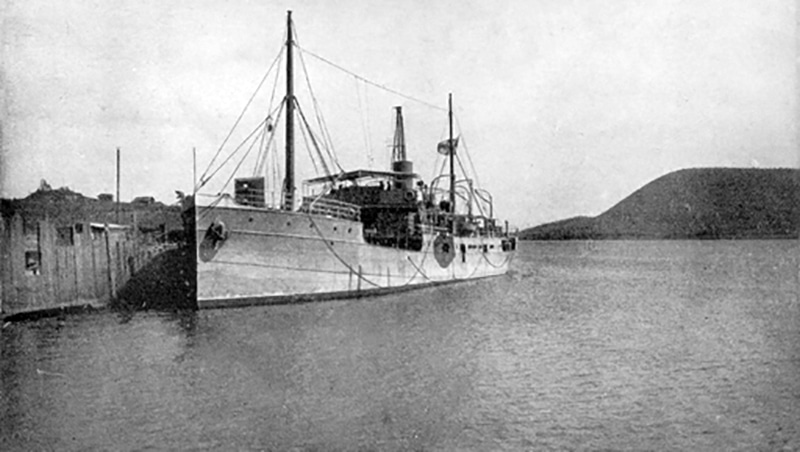
Two motorboats measuring 40 feet long (12 meters) made up the British naval force. The Admiralty rejected Spicer’s suggestions for the names “Dog” and “Cat.” Toutou and Mimi were recommended as options by Spicer-Simson, which were both approved. As he subsequently explained, these stood for “bow-wow” and “miaow” in French. The crews were made up of friends and Royal Naval Reserve members. They were chopped down to enhance speed, Maxim cannons and a 3-pounder Hotchkiss gun were attached, albeit the Hotchkiss had to be shot from a kneeling posture, and Spicer-Simson recommended several changes to the original design. On Spicer’s advice, they were trimmed down to boost speed, a 3-pounder Hotchkiss and Maxim gun cannon were installed, albeit the Hotchkiss had to be shot from a kneeling posture, and more steel linings were added to the fuel tanks. On June 8, the boats were then tested on the River Thames, with Mimi firing a practice shell using her 3-pounder as part of the test. The shell hit the target because the gun was not securely attached to the deck. But both the gunner and the gun were thrown into the river. Together with customized cradles and trailers that would enable their transport by road or rail, the boats were put on board the SS Llanstephen Castle on June 15, along with the supplies and equipment of the expedition. After reaching South Africa, they had to be transported 3,000 miles (4,800 kilometers) inland, including a 1,800-meter (5,900-foot) mountain range. Meanwhile, the Graf von Götzen was launched during the battle for Lake Tanganyika on June 8.
Toutou and Mimi completed the first stage of their 10,000-mile (16,000 km) expedition after a 17-day voyage and landing at the cape. They and the soldiers involved traveled north by rail from Cape Town to Elisabethville through Bulawayo and arrived on July 26. They were detrained at Fungume and carried 146 miles (235 kilometers) through the bush by teams of steam tractors and oxen to the commencement of the railway between Sankisia and Bukama. The boats and supplies were unloaded and prepped for a voyage downstream on the River Lualaba, where they completed their mission after sailing past Lake Kinsale and arriving at Kabalo on October 22, despite running aground numerous times and being forced to obtain passage on a Belgian river steamer. From there, they boarded a small train that carried them near Lukuga, a Belgian port on Lake Tanganyika’s shores. Spicer-Simson met with Commandant Stinghlamber, the Belgian army commander, and Commandant Goor, the Belgian navy commander. Then, plans were established to launch Toutou and Mimi during the battle for Lake Tanganyika and hunt down the Germans.
Preparations from Belgium and Germany
The loss of the SMS Königsberg cruiser in July on the Rufiji River had enhanced Germany’s position in Tanganyika. The Germans took advantage of the loss of the surveying steamer Möwe during the battle for Lake Tanganyika by recruiting part of her crew and personnel from commerce ships on the Deutsche Ost-Afrika Linie to operate their ships. Guns stripped from Königsberg landed at Kigoma, and Captain Gustav Zimmer, the German naval commander, placed a 105 millimeters (4.1 inches) quick-firing gun (SK L/40 Schnelladekanone) aboard Götzen. Königsberg’s crew members also joined his troops, and Zimmer appointed Lieutenant Job Rosenthal, a former crew member, as Kingani’s commander. Hedwig was led by Job Odebrecht, while Götzen was commanded by Zimmer himself.
The Belgians only raised a petrol-powered barge named Dix-Tonne with two guns, a motorboat called Netta, and a whaler with an outboard engine against this overwhelming force. Goor wanted to put the yet-to-be-assembled Baron Dhanis together with the hulk of Alexandre del Commune, which Hedwig von Wissmann had sunk earlier in the battle for lake Tanganyika, back into service. While Zimmer was aware of the intention of the British to deploy ships on Tanganyika, he was also anxious that the Baron Dhanis would be constructed and launched. The Baron Dhanis, weighing 1,500 long tons (1,500 tonnes), was not a direct threat to Götzen while in port, but he was desperate to keep his independence on the lake. He dispatched Rosenthal onboard Kingani with orders to reconnoiter Lukuga since he lacked precise information.
Belgian floatplanes were stationed on the lake, allowing them the opportunity to monitor and bomb German positions.
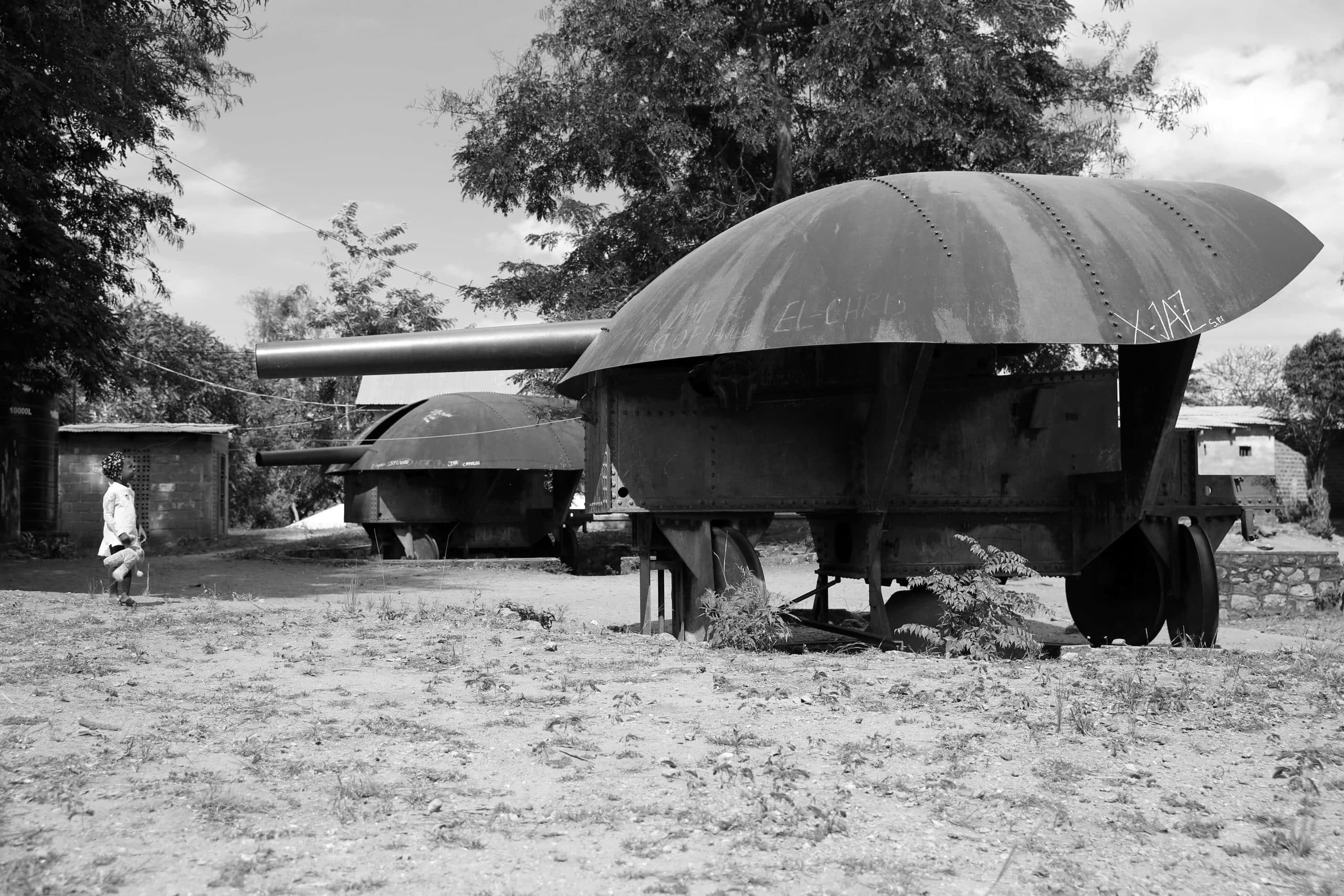
Sequence of Events in the Battle for Lake Tanganyika
Rosenthal Investigations
The commanding officer of the Kingani, Lieutenant Job Rosenthal, made numerous passes and witnessed the development of a new harbor in Kalemie, to the south of Lukuga, where Spicer-Simson planned to establish his base. Still, without concrete information regarding the enemy’s activities, Kingani returned early on the morning of December 1 in preparation for the battle for Lake Tanganyika and attempted to approach the port. The shore batteries noticed Rosenthal’s craft and chased it away, but it returned the next night, and Rosenthal himself swam to Lukuga to see the slipways under construction.
Launching of Toutou and Mimi
By mid-December, slipways in Kalemie were complete, and the preparation for the battle for Lake Tanganyika was almost complete. Toutou was released onto the lake on December 22, followed by Mimi the next day. On December 24, final preparations were conducted, including fueling and gun fitting, followed by brief testing. Kingani approached Kalemie on December 26. Sub-Lieutenant Junge, Rosenthal’s replacement, was given orders to gather intelligence on naval preparations, and she was spotted offshore at 6:00 a.m., as Spicer-Simson was leading morning prayers.
The Capture of Kingani
After Kingani had gone by, Toutou and Mimi left the port in pursuit. Junge ordered the pace to be increased as two motorboats unexpectedly followed him with the white ensign. However, because Kingani’s 6-pounder cannon could only shoot forward, the quicker and more agile motorboats quickly closed in and started shooting with their three-pounder guns while evading the German fire. Kingani was struck on her gun after a brief 11-minute battle, with the shell going through the gunshield and murdering Junge and two petty officers, Schwarz and Penne. Her chief engineer brought down the colors after many more hits, and the British gained control of her. Junge and four other crew members were buried; one African crew member was permitted to remain on board as a stoker, while 3 Germans and 8 Africans were taken as war prisoners. When the battle for Lake Tanganyika was over, a breach in Kingani’s hull was repaired, and she was commissioned as HMS Fifi. Spicer-Simson claimed that Fifi was proposed by a Belgian officer’s wife who had a little caged bird and is a French word meaning “tweet-tweet”.
Hedwig is Sunk
Hedwig arrived at Lukuga in mid-January to investigate the loss of the German ship. By this time, Spicer-Simson had received the repaired Belgian ship Delcommune, which had been renamed Vengeur, to join his fleet in preparation for the Battle for Lake Tanganyika. Odebrecht explored near the beach, staying away from the shore batteries suspected of sinking Kingani, but saw nothing worth reporting. On February 8, he was summoned back to Lukuga and told to meet Zimmer the following day on Götzen. Early in the morning, Hedwig was discovered, and the expedition’s men set forth to intercept her. Mimi, Dix-Tonne, Fifi, and the whaleboat made up the joint Anglo-Belgian fleet, with Toutou still undergoing repairs from the damage it had sustained during one of the battles for Lake Tanganyika. Odebrecht saw the oncoming ships but proceeded on his way. At first, he thought they were Belgian vessels, but their white ensigns proved they were British. He proceeded toward the coast until 09:30, when he made an abrupt turn to port, either hoping to entice them to Götzen or possibly being tricked by an optical illusion into believing the oncoming warships were bigger than he had initially assumed. Fifi opened fire with her bow-mounted 12-pounder as the warships pursued Hedwig.
Odebrecht took advantage of the moment when the rebound halted her dead in her tracks. Hedwig moved at 9 knots (10 mph; 17 km/h) compared to Fifi, which could do 8 knots (9.2 mph; 15 km/h), but as it sped away from Fifi, Mimi rushed by, firing her three-pounder cannon on the retreating Hedwig. Although they missed, Hedwig’s stern guns lacked the range of Mimi’s gun, forcing Odebrecht to come around and try to strike her with the 6-pounder mounted on her bow. Fifi narrowed the gap after the two circled for a while, unable to get hits. Commanding onboard Fifi, Spicer-Simson was down to 3 shells on its twelve-pounder, and he feared being overpowered if Hedwig brought her 6-pounder to bear. A shell got stuck in Fifi’s cannon at this point, and Hedwig withdrew again in the 20 minutes Fifi’s crew spent removing it, looking for Götzen. Fifi fired a third time, her second-last shot. The shell damaged Hedwig’s hull, causing flooding, and her engine room was hit by the last shell moments later, shattering the boiler and murdering 5 African sailors and 2 Germans. As flames engulfed the damaged vessel, Odebrecht ordered his remaining crew to leave the ship and use explosive charges to destroy the ship. (In the boiler room, 3 of the deceased were engineers and two native stokers; the others were three locals and a warrant officer.) Of the remaining crew after the battle for lake Tanganyika, a local shaman and a European stoker were injured when 2 of the ship’s boats were damaged by shells; 12 Europeans, including the captain and eight natives, were damaged and seized by the British. In addition to the twenty survivors, the British also took a big naval ensign belonging to the Germans. It was the first of the war since the beginning of the battle for Lake Tanganyika.
The Scuttling of Götzen
After the battle for Lake Tanganyika, the fleet returned ashore with their captives, and Götzen was seen offshore the next day, gently cruising by while searching for the missing Hedwig. Alarmed, the seamen hastened to man their boats, but Spicer-Simson banned an attack. Spicer-Simson soon departed the lake to Stanleyville, searching for a boat to match Götzen. He found a suitable vessel, St George, a steel boat owned by the British consul in Banana, and had it dismantled, transported to Lake Tanganyika, and reconstructed. The German position on the lake had worsened when he came back in May. A British army moved north into Bismarckburg, and the Belgians were ready to conquer Kigoma. The voyage’s purpose was to reinforce ground expeditions from the lake, and the flotilla, consisting of Toutou, Mimi, Vengeur, and Fifi, landed off Bismarckburg on June 5. When Spicer-Simson saw a fort that protected the harbor, he opted not to start another battle for Lake Tanganyika and retreated to Kuta.
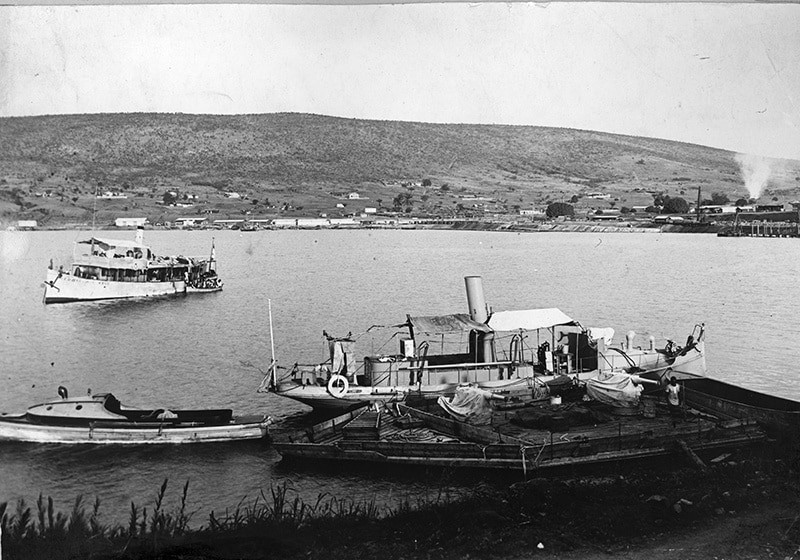
The German men could flea in a flotilla of dhows during the battle for lake Tanganyika, which infuriated Lieutenant-Colonel Murray, the army commander. The naval expeditionary troop stayed at Bismarckburg, where Spicer-Simson was chastised when he discovered that the guns at the fort were wooden dummies.
Elsewhere, the British had supplied 4 Short Type 827 floatplanes to the Belgians for the attack on Götzen in Kigoma. Numerous bombing runs were carried out. But the Belgians and the British were unaware that Zimmer had been instructed by Paul von Lettow-Vorbeck, his commanding officer, to remove the majority of the armory on Götzen, including the 105 millimeter- autocannon (4.1 inches) stripped from Königsberg, and transport it to the army for use in the field. Wooden dummies were installed To preserve the idea of a heavily armed warship when the battle for Lake Tanganyika was still ongoing. During the Tabora attack, Kigoma was captured by troops led by General Charles Tombeur on July 28, although Götzen had already left. The Germans towed the ship south of Kigoma Bay, loaded her with sand, and carefully sank her on July 26 at a depth of twenty meters in Katabe Bay, after carefully greasing her engines in case there was the need to use it again (British reference: Bangwe bay; Belgian designation: Baie de l’éléphant) in the coordinates 029° 36′ 12″ E; 04° 54′ 05″ S.
Aftermath
By mid-1916, the Anglo-Belgian sovereignty of Lake Tanganyika had been established, albeit the African war had gone on for another two years. Spicer-Simson was given the Distinguished Service Order award but was punished for some of his aggressive behavior against his Belgian friends and was not granted another command. On the other hand, the Belgians made him a Commander of the Order of the Crown and bestowed the Croix de Guerre on him. During the battle for Lake Tanganyika, the events piqued the public’s interest, and C. S. Forester adapted them for his novel The African Queen, which was eventually transformed into the film The African Queen, which John Huston directed. The novel has a British navy force made up of 2 motorboats named HMS Matilda and HMS Amelia. The Battle for Lake Tanganyika‘s legacy lives on in the survival of Spicer’s arch-enemy, Simson’s Graf von Götzen. The Belgians lifted her and hauled her to Kigoma, but she sank in a storm at her moorings. In 1921, the British lifted her again as part of their mandate to Tanganyika, when it was discovered that she had been kept so effectively by the grease that only minor repairs were required. She was renamed Liemba and restored to service on May 16, 1927, and continues to sail on Lake Tanganyika.
For more articles related to Tanganyika, click here!
























